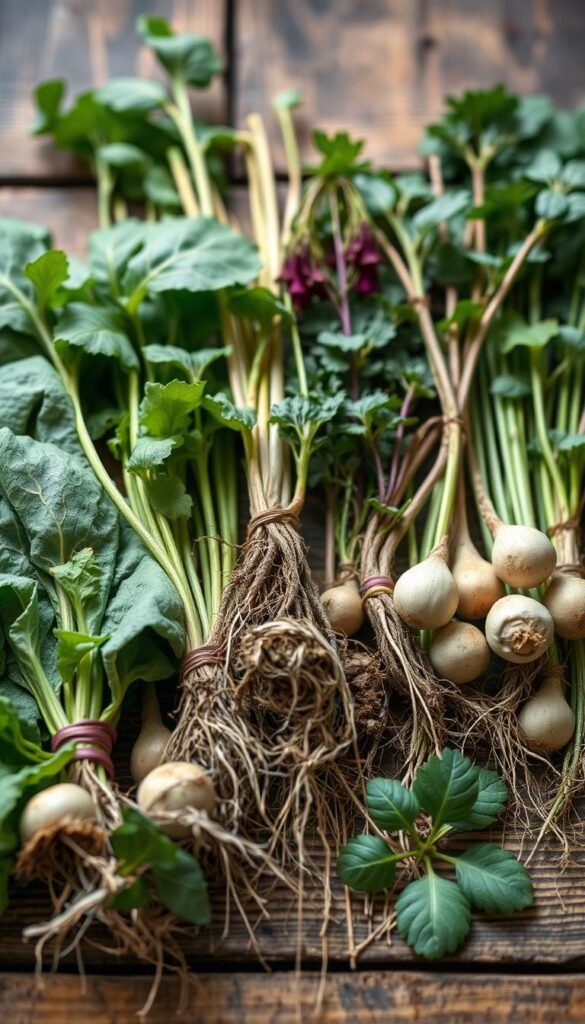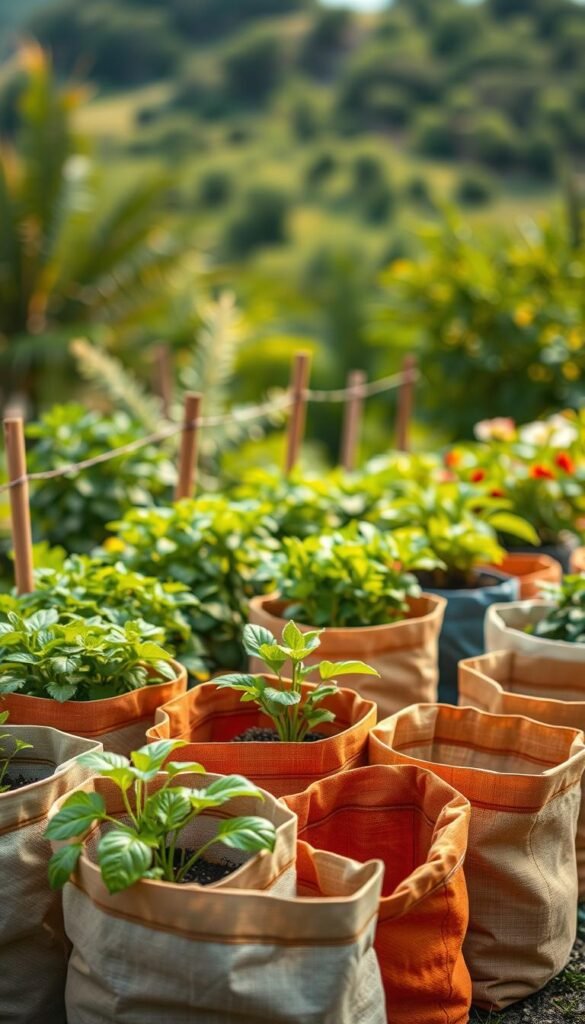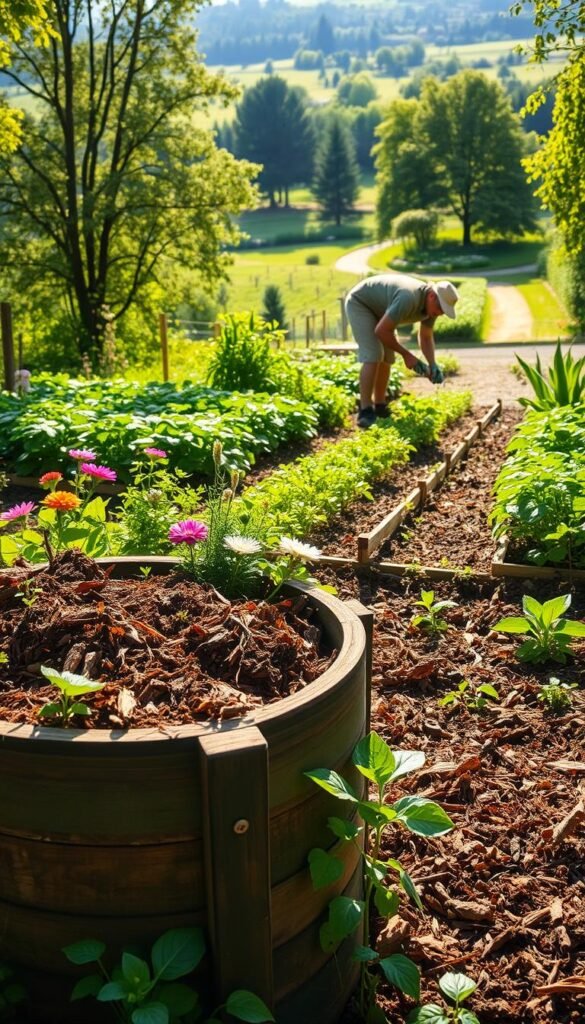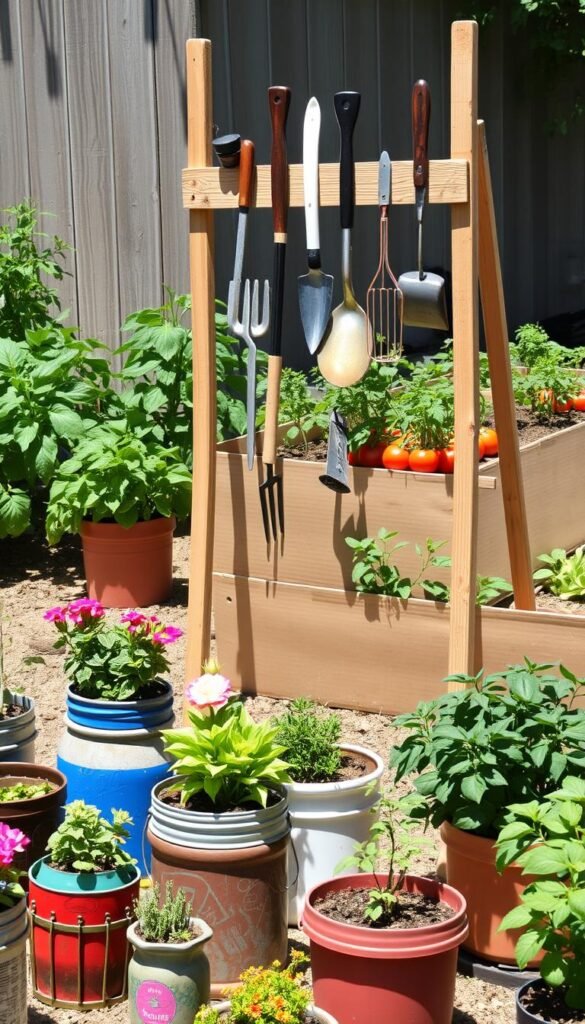Starting a garden shouldn’t feel like a financial burden. With the right strategies, you can grow fresh produce without overspending or wasting hours on unnecessary tasks. Imagine growing 140 tomato, pepper, or eggplant plants for just $15 in seeds—compared to $500+ for store-bought seedlings. Online sources like DollarSeed.com and MIgardener make this possible, even if you’re new to planting.
This guide shares practical tips from seasoned growers who’ve mastered budget-friendly techniques. You’ll learn how to skip pricey supplies and focus on what truly matters: maximizing your harvest. For example, starting seeds indoors requires an initial setup, but it pays off quickly. One gardener saved thousands annually after switching to this method.
Avoid common pitfalls like buying cheap tools that break or overwatering delicate seedlings. Instead, prioritize durable items and water-efficient practices. These choices create routines that stick, turning your first growing season into a foundation for long-term success.
By the end, you’ll know exactly where to invest—and where to cut corners—for the best results. Let’s make your green thumb dreams affordable and enjoyable from day one.
Get Started with Smart Seed Starting and Propagation
Transform your garden budget with smart seed strategies and propagation tips. Growing your own plants from scratch costs pennies compared to buying nursery seedlings. With basic supplies and simple techniques, you’ll build a thriving garden while keeping cash in your pocket.
Growing Plants from Seeds
Starting seeds indoors gives you control over quality and variety. Sites like DollarSeed.com offer heirloom tomato or pepper seeds for under $1 per pack—enough to grow 50+ plants. You’ll need:
- Biodegradable trays ($3-5)
- LED grow lights ($20 one-time investment)
- Seed-starting mix ($4 per bag)
| Factor | Seed Starting | Store-Bought Seedlings |
|---|---|---|
| Cost | $15 for 140 plants | $500+ |
| Variety Options | 500+ types | Limited selection |
| Long-Term Savings | Reuse supplies yearly | Annual expense |
Propagating Your Favorite Perennials
Multiply berry bushes like blueberries and raspberries through dormant season cuttings. Snip 6-inch stems from established plants in late winter, then root them in moist soil. Many gardeners swap cuttings—ask friends for spares to expand your collection for free.
Best plants for beginners:
- Blackberries (roots in 3 weeks)
- Jostaberries (cold-hardy)
- Raspberries (self-fertilizing)
5 Gardening Hacks to Save Time and Money in Your First Year

Building a vibrant garden starts with knowing where to find hidden deals. Timing your purchases and exploring unconventional suppliers can slash costs while maintaining quality.
Unlock Value with Dormant Season Purchases
Nurseries discount bare root plants heavily in late winter. These dormant specimens cost 40-60% less than potted versions come spring. Look for flexible stems and moist roots when selecting – avoid cracked bark or dried-out bundles.
| Plant Type | Bare Root Cost | Potted Cost |
|---|---|---|
| Fruit Trees | $12-$25 | $35-$60 |
| Berry Bushes | $5-$8 | $15-$25 |
| Perennial Flowers | $3-$5 | $10-$18 |
Budget Finds at Local Discount Stores
Dollar stores stock surprising gardening essentials that work for beginners:
- Plastic pots ($1.25 vs. $6 at nurseries)
- Coated garden twine (lasts 1-2 seasons)
- Seed starting kits (perfect for trial crops)
Test trowels in-store – bend the metal slightly. If it springs back, it’ll handle light digging. Combine these money-saving garden hacks to grow more while spending less.
Cost-Effective Container Gardening and DIY Potting Mix

Revolutionize your growing space without emptying your wallet. Container gardening lets you cultivate fresh produce anywhere – patios, balconies, or even fire escapes. The secret? Combining smart fabric pots with homemade soil that outperforms expensive store-bought options.
Exploring Fabric Grow Bag Pots
Fabric containers cost 80% less than ceramic or plastic pots while offering better results. These breathable bags prevent root circling and automatically prune roots when they hit the edges. Popular sizes include:
- 10-gallon: Ideal for tomatoes ($1.50 during sales)
- 30-gallon: Fits winter squash comfortably
- 100-gallon: Creates instant herb gardens
Unlike rigid containers, fabric bags fold flat for storage. One gardener reported “twice the pepper yield compared to clay pots” after switching.
Crafting Your Own Potting Soil
Store-bought mixes drain poorly and cost up to 15x more. Create superior potting soil using:
- Aged steer manure ($3 per bag)
- Screened topsoil ($1.50 per cubic foot)
- Wood fines (free from arborists)
Mix equal parts for vegetables or add perlite for succulents. This $3 blend grows healthier plants than $30 commercial soils – and you control the ingredients.
Efficient Watering and Maintenance Strategies

Smart watering routines turn chore time into growth time. Instead of hauling cans across your yard, try methods that cut effort while boosting plant health. These water-smart hacks help roots thrive without wasting precious hours.
Quick Fill Deep Dunk Technique
Transform watering cans into portable stations using a 36-quart tub. Fill it once from your hose, then dip your 1.5-gallon can six times without walking back to the spigot. “This cut my morning routine from 20 minutes to 5,” reports a urban gardener who grows 50+ plants.
Pre-mix liquid fertilizer for the entire tub using this ratio:
- 9 gallons water
- 6 oz concentrate
- Stir with a stick
Automating with Timers and Hose-End Shutoff Valves
Battery timers (
| Plant Type | Daily Water Time |
|---|---|
| Tomatoes | 25 minutes |
| Lettuce | 15 minutes |
Add a $7 shutoff valve at your hose’s bottom end to control flow where you work. For raised bed solutions, explore our guide on low-cost DIY irrigation methods.
These strategies create consistent moisture levels while freeing your schedule. Less walking means more time enjoying your green space!
Tips for Sustainable Mulching, Composting, and Soil Health

Boost your garden’s vitality while keeping costs low through smart soil care. Healthy earth feeds your plants and reduces long-term expenses. Let’s explore two powerhouse methods to transform scraps into garden gold.
Starting a Berkeley Hot Compost Pile
The Berkeley method turns yard waste into rich compost in 18 days. Use a 3×3-foot bin and layer equal parts brown materials (dry leaves) and green matter (grass clippings). Keep the pile moist like a wrung-out sponge and turn it every 2-3 days. This fast process creates enough soil amendment for multiple growing seasons.
Building a Worm Compost Bin
Red wigglers convert kitchen scraps into nutrient-packed castings. Split bulk worm orders with neighbors to cut costs. Add coffee grounds and shredded paper weekly, topping with wood chips every 2 weeks to balance moisture. One bin produces enough fertilizer for 20+ plants monthly.
Services like Chipdrop deliver free wood chips—perfect for protecting root zones and suppressing weeds. Spread 3-inch layers around trees and beds, allowing decomposition to improve soil structure naturally. Pair these sustainable gardening practices with building a compost system for year-round fertility.
Gardening Hacks Using Household Items and Budget Tools

Your home holds hidden treasures that can slash gardening costs dramatically. Everyday objects become powerful tools when repurposed creatively. Let’s explore how to turn clutter into growing solutions while following smart spending principles.
Affordable Tools and the Harbor Freight Rule
The Harbor Freight Rule teaches beginners to buy inexpensive gear first. A $13 multi-tool handles pruning, digging, and weeding effectively. Furring strips from hardware stores make perfect tomato stakes—cut 4-foot pieces into 18-inch sections for $2 each.
| Tool Type | Budget Option | Professional Grade | Savings |
|---|---|---|---|
| Pruners | $6.99 | $45 | 84% |
| Soil Scoop | Repurposed yogurt cup | $12 stainless steel | 100% |
| Trellis System | Furring strips + twine | $80 metal kit | 97% |
Recycling Household Items for Garden Projects
Toilet paper rolls become biodegradable seed starters. Fill them with soil, plant your seeds, and transplant directly into ground—the cardboard decomposes naturally. For plastic containers, poke drainage holes in old food tubs using a heated screwdriver.
Turn milk jugs into self-watering systems by cutting windows and adding wicks. One gardener reported, “My lettuce grew 30% faster in repurposed creamer bottles than in store-bought pots.” Explore more budget-friendly home gardening ideas to maximize savings.
These hacks prove you don’t need expensive supplies to grow thriving plants. Start small, test what works, and upgrade only when necessary.
Final Steps to a Thriving Garden Year
Your vegetable garden becomes a rewarding partner when you focus on simple care routines. Check plants every few weeks for pests or stress signs. Look for chewed leaves or discoloration near the around base of stems – these clues help catch issues early.
Water deeply at the bottom of young plants to encourage strong roots. A slow trickle from a repurposed milk jug works better than quick sprays. For flowers and food crops, add mulch around the around base to retain moisture and block weeds.
As your growing season progresses, keep notes on what thrives. Track which vegetables need more sun or which flowers attract helpful insects. This helps plan next year’s layout while saving time and effort.
Celebrate small wins – that first ripe tomato or blooming flower proves your hard work pays off. Share extras with neighbors or preserve your food harvest for winter. With these final touches, your home garden becomes a source of pride and nourishment for years to come.






